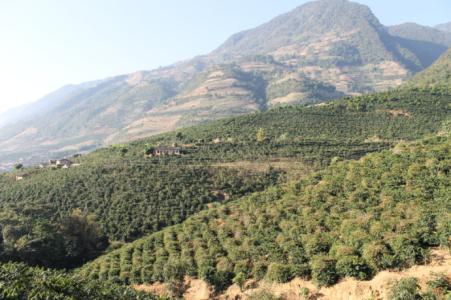Introduction to the cultivation of Paradise Bird Coffee Manor in Papua New Guinea
Introduction to the cultivation of Paradise Bird Coffee Manor in Papua New Guinea
Papua New Guinea has a detached and primitive natural environment and a vast and fertile land. Its unique volcanic rock soil and abundant rainfall create excellent natural conditions for the growth of coffee. The top coffee beans in Papua New Guinea are as beautiful and precious as the country's national bird, the bird of paradise. As coffee is widely grown in the highlands of 1300-1800 meters above sea level, coffee beans have plump grains, varied tastes, pleasant acidity and fruit-like sweetness.
The bird of paradise comes from Sigri Estate, a famous farm in Pakistan. Even without the name of the beautiful bird of paradise, it comes from a famous family. Sigri is famous for its beautiful environment, pleasant climate and traditional and strict process of coffee handling. Internationally, if you say Bird of Paradise, there is some ambiguity, people can only know that it is beans from Pakistan, but if you say it is sigri, you will definitely get a thumb-up.
Rich sour aroma, a hint of jasmine, smooth taste, coffee in the mouth appears to be very clean, no extra taste, after the coffee is swallowed, the aftertaste is very long.
The vast majority of PNG coffee is organic coffee, but it is not intentional by the local people. it is really because of inconvenient transportation and economic hardship, the average coffee farmer is determined to buy or afford chemical fertilizer. Babu's coffee has a lively flavor, with bright sour and fruity aromas. Unlike the dreary taste of Asian beans, Babu has the meaning of African beans. As a result, although it is not a famous show, it is cleverly likable. It comes from the high mountains on the island, and there are birds of paradise singing on the coffee tree.

Important Notice :
前街咖啡 FrontStreet Coffee has moved to new addredd:
FrontStreet Coffee Address: 315,Donghua East Road,GuangZhou
Tel:020 38364473
- Prev

Brief introduction of Grinding scale by description of Taste and Flavor in Coffee Farm area of Ethiopia
Grade of Ethiopian coffee: Ethiopian washed coffee Yega Chuefei G1 G2 Sidamo (Yirgacheffe, Sidamo) has the highest grades 2 and 3 (G2, G3), while sun-processed coffee in eastern Ethiopia is mostly grade 4 or 5 (G4, G5). In many cases, level 4 coffee is marked as level 5 in order to reduce taxes. At present, the classification is not uniform and there are
- Next

Introduction to the altitude planting environment of Kimmel Manor in Rwanda, which is mostly water washing treatment.
Most of the coffee in Rwanda is washed. The water washing method will first wash and flotation the ripe coffee fruit, then remove the exocarp, pulp and part of the pectin layer, then send the coffee into the fermentation tank, remove the remaining pectin layer and then send it to the drying ground for drying treatment, so that the water content reaches about 13%. The coffee in the picture above is placed in an African shed to dry.
Related
- Does Rose Summer choose Blue, Green or Red? Detailed explanation of Rose Summer Coffee plots and Classification in Panamanian Jade Manor
- What is the difference between the origin, producing area, processing plant, cooperative and manor of coffee beans?
- How fine does the espresso powder fit? how to grind the espresso?
- Sca coffee roasting degree color card coffee roasting degree 8 roasting color values what do you mean?
- The practice of lattes: how to make lattes at home
- Introduction to Indonesian Fine Coffee beans-- Java Coffee producing area of Indonesian Arabica Coffee
- How much will the flavor of light and medium roasted rose summer be expressed? What baking level is rose summer suitable for?
- Introduction to the characteristics of washing, sun-drying or wet-planing coffee commonly used in Mantenin, Indonesia
- Price characteristics of Arabica Coffee Bean Starbucks introduction to Manning Coffee Bean Taste producing area Variety Manor
- What is the authentic Yega flavor? What are the flavor characteristics of the really excellent Yejasuffi coffee beans?

